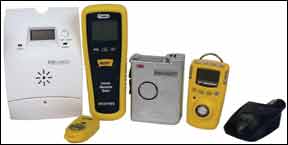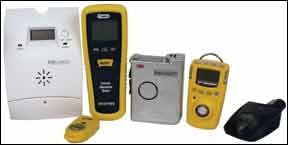Headset Blowback
Your review of in-the-ear headsets was interesting, but you might want to give a little more space to custom eartips. I bought my Lightspeed Mach 1 with custom eartips as an integrated package, which includes a negotiated, reduced fee for the audiologist and saves a little cash. But either way, its we’ll worth it.

With custom earmolds, the Mach 1 is so comfortable I cant feel its presence on my head or in my ears. It also stays in place much more securely than with foam tips, so we’ll that I removed the over-the-ear clip from the left earpiece/mic unit and it still doesnt budge. And, contrary to your quote from the competition, although the low-frequency attenuation isn’t as good as the best ANR earcups, the high-frequency noise reduction is as good as the best head-crushing vise Ive worn.
The Mach 1 with custom eartips still costs less than a Zulu, and way less than a Bose A20. For airplanes with big, loud piston engines and big, loud propellers, earcup ANR is still the best bet. But for high-frequency wind or canopy noise and absolute comfort, the Mach 1 with custom earmolds is the best Ive experienced.
Steve Leonard
Via e-mail
Ive been using Lightspeed headsets of one form or another for over 10 years now. I went to the molds when they stopped stocking their largest foam earplugs. With the custom ear mold plugs, the mike stays in place and there’s no need for the over-the-ear hanger.
Youre left with two earplugs, wires and the interface box. Cant say how long the battery lasts in the controller, but mine is still going strong after two years. My wife prefers quiet to read when we fly and I prefer a little music. Plugging into the Lightspeed controller provides the perfect solution.
Alan Williams
Via e-mail
CO Detectors
Thanks for the kick in the pants to re-evaluate my SafeTest 90 that your article on carbon monoxide detectors in the February issue provided. I have had the Quest SafeTest 90 since a near-death experience in my Tiger 12 years ago.
I bought the SafeTest for $250 from Sportys the next day. Since I have no OSHA requirements, I never had it tested or recalibrated, but it would occasionally give low CO readings when I taxied with the canopy open and so I was satisfied that I was covered.
After reading your article, I did an informal test of the SafeTest against a top-end CO detector I have in my house and I was satisfied that the SafeTest 90 needed recalibration and probably a new sensor. A quick call to the Quest technicians at 3M confirmed both these conclusions.
But I was quoted a price for the calibration check and a sensor which was we’ll north of the new price of the BW Detectors you described in the February article. The information I got from BW was slightly in variance from the information in the article. The 24-month clip was $200, but the $240 option they have is for the 36-month disposable and the Gas Alert Extreme was $265.
They claim to have no intention of selling these through Aircraft Spruce and in fact do not sell them direct to users, either. I had to order it through a local distributor which also added $20 in sales tax. No real difference than paying shipping from Aircraft Spruce, but I would rather support the boys in Memphis or Louisville than the band of criminals who run our city and state, but thats just me.
I just picked up the Gas Alert Extreme today and think Ill really like it. It fits in the receptacle I built for the Quest unit in my cockpit and the distributors here in Albuquerque can calibrate and replace the sensor locally for about one-third the price (and without any shipping delay or expense) that 3M will do the SafeTest. It also has all the same functions as the SafeTest 90.
I agree with you, the SafeTest 90 is a premier piece of equipment, but the pricing imposed by 3M and the discontinuance of production are both strong indicators that they arent interested in serving the market any longer. Take good care of the Safe Test 90 you have.
Brent Smith,
Via e-mail
Cirrus Accidents
I have been an Aviation Consumer subscriber for over seven years and Im writing for the first time to express how disappointed I am in your Used Aircraft Guide on the Cirrus SR22. It is clear that you have been enamored with the Cirrus, but I have come to expect very candid reporting from you rather than thinly veiled marketing.
I have been seeing a lot of Cirrus fatalities in the news so I decided to do some research on my own on just to see how safe the parachute, G1000 Perspective and level button actually are and it is quite shocking.
From the FAA registry, there are 3803 certified Cirruses on the registry and the NTSB reported 68 fatal accidents. To get a fatal accident rate, I divided the total number of airplanes by accidents and was disturbed to find that one out of 56 Cirrus airplanes have been in fatal accidents. Now, I don’t know about you, but that number scares the heck out of me, especially for an airplane that is often professionally flown by trained crew on routine business-type flights.
To be fair and to compare Cirrus against the airplane that is often mistaken for Cirrus, I compared Cirrus numbers against the Columbia/Cessna 350 and 400 (LC42 and LC41, respectively) and came up with a total of 674 registered airplanes and only five fatal accidents. Again, to be clear, what I feel is important is the rate of accidents and the Columbia/Cessna composite aircraft fatality rate is 1/135. In other words, despite the parachute, the G1000 Perspective, the level button and the frequent professional crew, the Cirrus is 250 percent more fatal than the Columbia/Cessna composite aircraft that is flown with similar utilization on business-type missions.
Personally, I wouldnt get into an airplane that killed one out of 56 of its pilots, yet this airplane is generally accepted as “safe,” and that disturbs me.
I don’t buy into the “those pilots are different” philosophy attributing that kind of fatality disparity to the pilots, nor do I buy into the claim that the airplane is flown on different missions or utilization with respect to the Columbia/Cessna composites. Cirrus has undeniably spectacular marketing and sold the FAA (and Aviation Consumer) on a “comparable level of safety,” but let me personally challenge you to test that assertion.
If you go on blindly reiterating the marketing and not doing your homework you directly contribute to the continuing malaise of general aviation and specifically against what your publication (and sister publication Aviation Safety) claim to promote-namely the safety, intelligence and general welfare of your readers.
Eric Neeb,
Boulder, Colorado
We didnt “blindly accept” Cirrus marketing claims. We did our own investigation which examined the Cirrus accident pattern the correct way-by rate measured against exposure. Because reliable fleet hours data is difficult to come by, we relied on a combination of our own estimates, Cirrus data and data from owners.
We found that the Cirrus fatal accident rate-and the percentage of Cirrus accidents that are fatal-is a bit higher than the GA average. We calculated about 1.6/100,000, versus about 1.2 for the rest of GA. The SR22s overall accident rate appears to be about average in the 6.2/100,000 range.
It is true that the Cirrus accidents per registrations is high, but this method of accident ranking is blind to exposure and thus limited.
Furthermore, we don’t accept the notion that the Cirrus is often flown by professional pilots. It is predominantly an owner-flown airplane, in our view. In a future article, we’ll take another look at Cirrus stats.


